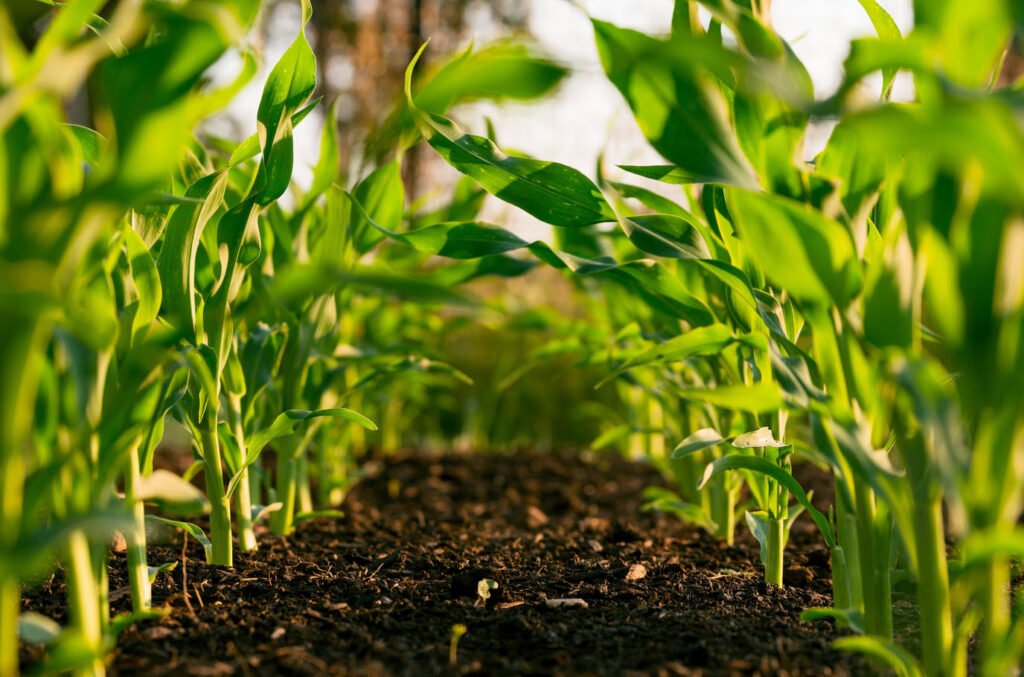There are 20 nutrients that all plants require. Six of the most important nutrients, called macronutrients, are: calcium, magnesium, nitrogen, phosphorous, potassium, and sulfur.
Of these, nitrogen, phosphorus, and potassium are essential to healthy plant growth and so are required in relatively large amounts. Nitrogen is associated with lush vegetative growth, phosphorus is required for flowering and fruiting, and potassium is necessary for durability and disease resistance.
Calcium, sulfur, and magnesium are also required in comparatively large quantities and aid in the overall health of plants.
The other nutrients, referred to as micronutrients, are required in very small amounts. These include such elements as copper, zinc, iron, and boron.
While both macro- and micronutrients are required for good plant growth, over-application of these nutrients can be as detrimental to the plant as a nutrient deficiency. Over-application of plant nutrients may not only impair plant growth, but may also contaminate groundwater by penetrating through the soil or may pollute surface waters.
Soil Testing
Testing your soil for nutrients and pH is important in order to provide your plants with the proper balance of nutrients (while avoiding over-application).
If you are establishing a new lawn or garden, a soil test is strongly recommended. The cost of soil testing is minor in comparison to the cost of plant materials and labor. Correcting a problem before planting is much simpler and cheaper than afterwards.
Once your garden is established, continue to take periodic soil samples. While many people routinely lime their soil, this can raise the pH of the soil too high. Likewise, since many fertilizers tend to lower the soil’s pH, it may drop below desirable levels after several years, depending on fertilization and other soil factors, so occasional testing is strongly encouraged.
This electronic soil tester runs on one AA battery and gives pH, nutrient, and moisture level readings within minutes. Home tests for pH, nitrogen, phosphorus, and potassium are available from most garden centers.
University and other commercial testing services will provide more detail, and you can request special tests for micronutrients if you suspect a problem. In addition to the analysis of nutrients in your soil, these services often provide recommendations for the application of nutrients or how best to adjust the pH of your soil.
The test for soil pH is very simple. pH is a measure of how acidic or alkaline your soil is. A pH of 7 is considered neutral. Below 7 is acidic and above 7 is alkaline. Because pH greatly influences plant nutrients, adjusting the pH will often correct a nutrient problem.
At a high pH, several of the micronutrients become less available for plant uptake. Iron deficiency is a common problem, even at a neutral pH, for such plants as rhododendrons and blueberries. At a very low soil pH, other micronutrients may be too available to the plant, resulting in toxicity.
Phosphorus and potassium are tested regularly by commercial testing labs. While there are soil tests for nitrogen, these may be less reliable. Nitrogen is present in the soil in several forms that can change rapidly.
Therefore, a precise analysis of nitrogen is more difficult to obtain. Most university soil test labs do not routinely test for nitrogen. Home testing kits often contain a test for nitrogen that may give you a general, though not necessarily completely accurate, idea of the presence of nitrogen in your garden soil.
To determine the various layers of your soil, called your “soil profile,” a core sample can be taken. This requires a boring machine, which will insert a hollow core rod, or “probe” like these shown here deep into the ground to extract soil. The layers will be distinguishable by the change in soil color. Several core samples can be mixed together for a more accurate soil test.
Steps for Taking a Soil Test
1. If you intend to send your sample to the land grant university in your state, contact the local Cooperative Extension Service for information and sample bags. If you intend to send your sample to a private testing lab, contact them for specific details about submitting a sample.
2. Follow the directions carefully for submitting the sample. The following are general guidelines for taking a soil sample:
- Sample when the soil is moist but not wet.
- Obtain a clean pail or similar container.
- Clear away the surface litter or grass.
- With a spade or soil auger, dig a small amount of soil to a depth of 6 inches.
- Place the soil in the clean pail.
- Repeat until the required number of samples has been collected.
- Mix the samples together thoroughly.
- From the mixture, take the sample that will be sent for analysis.
- Send immediately.
- Do not dry before sending.
3. If you are using a home soil testing kit, follow the above steps for taking your sample. Follow the directions in the test kit carefully so you receive the most accurate reading possible.
Organic matter is often part of a soil test. Organic matter has a large influence on soil structure and so is highly desirable for your garden soil.
Good soil structure improves aeration, water movement, and retention. This encourages increased microbial activity and root growth, both of which influence the availability of nutrients for plant growth. Soils high in organic matter tend to have a greater supply of plant nutrients compared to many soils low in organic matter.
Organic matter tends to bind up some soil pesticides, reducing their effectiveness, and so this should be taken into consideration if you are planning to apply pesticides to your garden. Tests for micronutrients are usually not performed unless there is reason to suspect a problem.
Certain plants have greater requirements for specific micronutrients and may show deficiency symptoms if those nutrients are not readily available.



